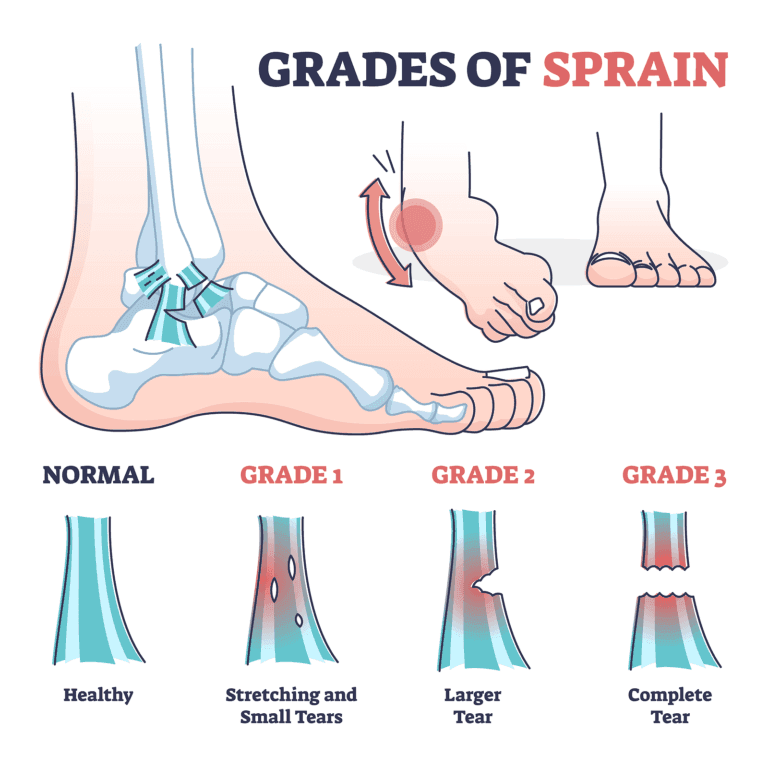An Ortho-Opinion
Ankle sprains are among the most common injuries, frequently occurring during sports activities, and can even happen during everyday activities like walking across the yard. These injuries are particularly prevalent in sports such as basketball, football, and rugby.
Understanding Ankle Sprains
The ankle is more prone to sprains due to its ability to turn inwards more easily, which often leads to the injury. A sprain refers to damage to the ligaments, which are the tough fibers that connect bones and provide stability to joints while allowing movement.
The most common ankle sprains involve tearing of the ligaments on the outer side of the ankle. This tearing results in internal bleeding, visible as bruising on the skin. Fortunately, the body’s natural healing process generally allows these ligaments to recover on their own.
The Healing Process
After an ankle sprain, the body immediately starts the healing process by sending blood to the injured area, causing swelling. Given the distance from the ankle to the heart, some swelling may persist even after the injury appears to have healed. This swelling typically reduces overnight but may increase with daily activities due to normal blood flow.
Treatment: RICE Method
The RICE method (Rest, Ice, Compression, Elevation) is effective in treating ankle sprains. This approach helps reduce swelling, alleviate pain, and support the healing process. Studies suggest that resuming activity as soon as possible, when pain permits, can lead to a quicker recovery.
When to Seek Medical Care
Immediate medical attention is necessary if the pain is severe and you cannot bear weight on the ankle. Recovery time varies based on the extent of the ligament injury and can range from days to months. If improvement stalls or you cannot return to your usual activities, consulting an orthopaedic specialist is advisable.
Prevention Tips
Preventing ankle sprains is preferable to treating them. Stretching before sports can help prevent injuries to the ankle and other joints. Additionally, using ankle braces or taping can prevent recurrent sprains, especially if you have a history of such injuries.
Expert Opinion
Experts suggest that understanding the normal healing process and knowing when to seek medical attention can significantly improve outcomes for ankle sprains. Persistent swelling, difficulty bearing weight, or lack of improvement are signs that professional evaluation may be necessary. preventative measures like proper warm-ups and protective gear can help reduce the incidence of these injuries.
By following these guidelines, you can better manage and prevent ankle sprains, ensuring you remain active and healthy. Stay informed, take preventative measures, and seek expert advice when needed to maintain optimal joint health.





